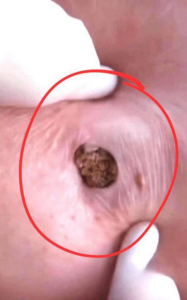
How to Treat Pimples: Gentle, Proven Solutions for Clearer Skin at Any Age
Pimples — whether they’re the occasional intruder or a chronic issue — are a common skin concern that affect people of all ages. From hormonal teenage breakouts to adult-onset acne, these pesky bumps can be frustrating, painful, and at times, a blow to self-confidence. The good news? With the right knowledge and approach, clearer skin is within reach. Below, we explore gentle, proven solutions to treat pimples — safely and effectively — no matter your age or skin type.
Understanding Pimples: What Are They, Really?
Pimples, or acne lesions, form when hair follicles become clogged with oil (sebum), dead skin cells, and bacteria. This leads to inflammation, resulting in red, swollen bumps that can take many forms:
-
Whiteheads: Closed clogged pores
-
Blackheads: Open clogged pores (oxidized, hence the black color)
-
Papules: Small, red, inflamed bumps
-
Pustules: Papules with pus at the tip
-
Nodules/Cysts: Deep, painful lumps under the skin
Hormonal fluctuations, genetics, stress, diet, skincare habits, and certain medications can all play a role.
1. Keep It Clean — But Don’t Overdo It
Washing your face is essential, but harsh scrubbing or over-cleansing can backfire.
✅ Use a gentle, pH-balanced cleanser twice a day — morning and evening.
Avoid products with alcohol, sulfates, or heavy fragrances that can irritate or dry out your skin.
Recommended ingredients to look for:
-
Salicylic acid (0.5%–2%): A beta hydroxy acid (BHA) that gently exfoliates and penetrates pores
-
Benzoyl peroxide (2.5%–5%): Fights acne-causing bacteria
-
Tea tree oil: A natural antibacterial alternative with anti-inflammatory properties
⚠️ Avoid harsh scrubs or excessive washing — it can strip your skin’s protective barrier and worsen breakouts.
2. Moisturize — Yes, Even Oily Skin Needs It
One common myth is that oily or acne-prone skin doesn’t need a moisturizer. In fact, dehydrated skin may produce more oil to compensate, potentially clogging pores further.
✅ Choose a non-comedogenic, oil-free moisturizer. Look for:
-
Hyaluronic acid for hydration
-
Niacinamide for reducing redness and regulating oil
-
Ceramides to restore the skin barrier
For nighttime, a light gel moisturizer can soothe and repair without clogging pores.
3. Spot Treatments That Work
When a breakout appears, spot treatments can reduce swelling, redness, and duration.
Effective spot treatment options:
-
Benzoyl peroxide: Antibacterial, best for red, inflamed pimples
-
Sulfur: Helps dry out surface blemishes and unclog pores
-
Salicylic acid: Ideal for blackheads and whiteheads
-
Hydrocolloid pimple patches: Draw out pus and protect from picking
Apply these only to affected areas, not the whole face, to prevent irritation.
4. Retinoids: Game Changers for All Ages
Derived from Vitamin A, retinoids are among the most effective long-term treatments for acne.
They work by:
-
Increasing cell turnover
-
Unclogging pores
-
Preventing new breakouts
-
Fading dark spots and acne scars over time
Over-the-counter versions include retinol and adapalene (Differin 0.1%), while stronger options like tretinoin require a prescription.
⚠️ Start slow (2–3 nights/week), use a pea-sized amount, and moisturize to combat dryness or irritation.
5. Don’t Pick or Pop
We’ve all done it, but picking at pimples can:
-
Push bacteria deeper into the skin
-
Lead to scarring
-
Spread inflammation
Instead, apply a warm compress to reduce swelling, use a pimple patch overnight, and be patient.
If a pimple comes to a whitehead, sterile extraction can be done carefully — ideally by a dermatologist or licensed esthetician.
6. Watch Your Diet
While acne isn’t caused by food alone, some dietary factors can trigger or worsen breakouts for certain people.
Potential acne aggravators:
-
Dairy, especially skim milk
-
High-glycemic foods (white bread, sugary snacks, soft drinks)
-
Whey protein supplements
Consider reducing these if breakouts persist. Instead, load up on anti-inflammatory foods:
-
Omega-3 fatty acids (salmon, walnuts)
-
Antioxidant-rich fruits (berries, leafy greens)
-
Zinc-rich foods (pumpkin seeds, legumes)
Staying hydrated also helps flush toxins and maintain healthy skin function.
7. Be Smart with Makeup
Heavy makeup can clog pores — especially if not removed properly.
✅ Choose non-comedogenic or mineral-based makeup
✅ Always remove makeup before bed
✅ Clean brushes regularly to prevent bacteria buildup
If possible, give your skin makeup-free days to breathe and recover.
8. Mind Your Hair and Hands
Your hair and hands come into contact with your face more than you might realize.
-
Avoid hair products with heavy oils or waxes that can clog pores
-
Tie hair back, especially during sleep or workouts
-
Keep hands clean, and avoid resting your face on them throughout the day
-
Clean your phone screen often — it’s a germ hotspot!
9. Consider Professional Treatments
If home remedies aren’t enough, a dermatologist or licensed esthetician can offer targeted therapies:
-
Chemical peels to exfoliate and reduce clogged pores
-
Light therapy (blue or red light) to kill bacteria and reduce inflammation
-
Microneedling to treat acne scars
-
Prescription medications (like antibiotics or hormonal therapy)
For severe, cystic acne, isotretinoin (Accutane) may be an option — but it requires close monitoring due to side effects.
10. Be Patient and Consistent
No treatment works overnight. It can take 4 to 8 weeks to see noticeable improvement from new skincare routines or medications. The key is consistency.
Tips to stay on track:
-
Take progress photos weekly
-
Keep a skin journal to track what works
-
Avoid jumping between products too quickly
-
Introduce new ingredients slowly
And remember — clear skin doesn’t mean perfect skin. A breakout doesn’t define your worth.
When to See a Dermatologist
If you’re experiencing:
-
Painful, cystic breakouts
-
Scarring
-
Sudden, severe flare-ups
-
Acne that affects your mental health or confidence
Don’t hesitate to seek professional help. Dermatologists can provide personalized solutions that go beyond over-the-counter treatments.
Final Thoughts: Love the Skin You’re In
Pimples are normal. They don’t care about age, gender, or background — and they’re not a sign of dirtiness or poor hygiene. While treating them takes patience and trial and error, the right mix of gentle care, smart ingredients, and consistent habits can make a world of difference.
No matter where you are in your skincare journey, remember: clear skin is a process, not a race. And taking care of your skin is a powerful act of self-care.
